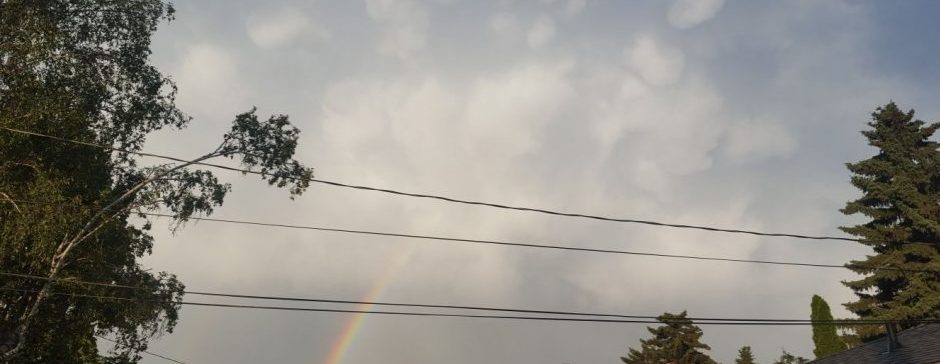Hey! I’m back once again after another long break from the blog. I’ve been thinking the current way I’ve been posting things here is maybe not working out. I could possibly stop doing the whole this post is short range, this one is long range; and trying to constantly have the latest forecasts for those. I did it for a while, but I just don’t have time to do that all. Instead, I might start doing a bunch of different, maybe more messy sort of stuff. You might get a post for the next 2 days that could start suddenly talking about next month, and then the next one 10 days later that says nothing about the latest forecast at all, instead doing something completely different.
Anyways, let’s get started. Unless you’re Patrick and you live under a rock, you would probably know that we’ve been in a cold wave for about five months now. Oh wait, that’s just what it feels like. It’s actually only been 2 and half weeks. It started in January, which somehow is also over half a month behind us already. How did that happen!? This cold wave has been caused by a high that has been kind of just sitting around, doing not much over the prairies for about forever, but finally starting tonight it is moving down south. This will warm us up, with us set to finally be back in the positives on Wednesday.
Now, I have a challenge for you. Using some basic weather knowledge and some information in the forecast I want you to see if you can predict something as seemingly random as the wind direction. What I want you to do is make a prediction of how the wind will behave over the next few days. Here is a list to help you:
- Around high-pressure systems winds flow clockwise. Around lows, counterclockwise.
- Winds flow outwards from highs and travel to lows.
- We have a strong high in southern Saskatchewan right now, but that will move down to the central US by Wednesday evening.
- There is a strengthening high in the northwestern corner of the US.
- Finally, tomorrow night a ridge going north from the Saskatchewan high will very quickly dissolve and low pressure will move in to the northwest.
See if you can figure it out! At the end of this post, I have the prediction on the forecast and why the prediction is that way. You might not want to read that just yet, and wait until Wednesday or Thursday to do so.
Okay, that was part one of the activity. For the next part, you will get to test your prediction. The next time you go outside I want you to note the wind direction. If you need to to remember it, you can write it down. Next, tomorrow evening note the wind direction again. Finally, do it one more time on Wednesday. For each of these notes, either in your head or on paper, you can use cardinal directions, which in that case go with either two, or preferably three “digits” (That would be like NNW). What you might want to use though instead is landmarks. Chose a memorable spot to measure the wind direction, and point towards where the wind is coming from. You can then find a landmark you are pointing at. You might want to close your eyes for getting the direction, because interestingly that usually gets a more accurate reading.
Okay, well you might not want to read this next part, as it may change your prediction. That’s not what is wanted! Come back here after you’ve made your final observation on Wednesday.
The first two items in the list are rules of weather. Those always happen worldwide*. The high, as it says, is moving south. Because of that rule that definitely didn’t get a extremely shortened but still very long footnote, the wind should be moving from the SE to SSW right now. As of writing this, we have southeasterly winds. As the high moves south, it will veer the winds, but the ridge (mentioned in the last item in the list) will keep it in place where it is. However, it does say that the ridge will quickly dissolve tomorrow evening, meaning the wind will change then. This wind will start coming from the Rockies, and the second-last item says there will be a high there and a low to the northwest. This will really reinforce the winds, meaning that tomorrow evening they should be southeasterly, but on Wednesday southwesterly.
If the forecast was right and you were right, good job! You were really good! If you were wrong and the forecast was right, then pay attention to how the forecast is explained above. After just a bit of reading, you should be able to understand what you missed. If you were right and the forecast was wrong, you either got really lucky, or you’re really smart. There’s no way for me to tell right now. Finally, if you and the forecast were both wrong, then, well, it’s also hard to tell. If your prediction was different from the forecast, then the weather just didn’t want to cooperate with anyone. If you’re prediction was the same though, you still get a lot of points. The weather sometimes does really unexpected things!
*Except the first one gets flipped in the southern hemisphere because the Earth is a sphere and it’s rotating and wind flows in certain patterns on the surface and it flows vertically and there’s patterns in all layers of the atmosphere and there’s cells that form bands of patterns in wind and temperature all over the surface and atmosphere because of pressure inversions, temperature inversions, and a whole lot of other stuff that we’re NOT going to talk about today. If you want to sound smart, it’s called the Coriolis effect.
